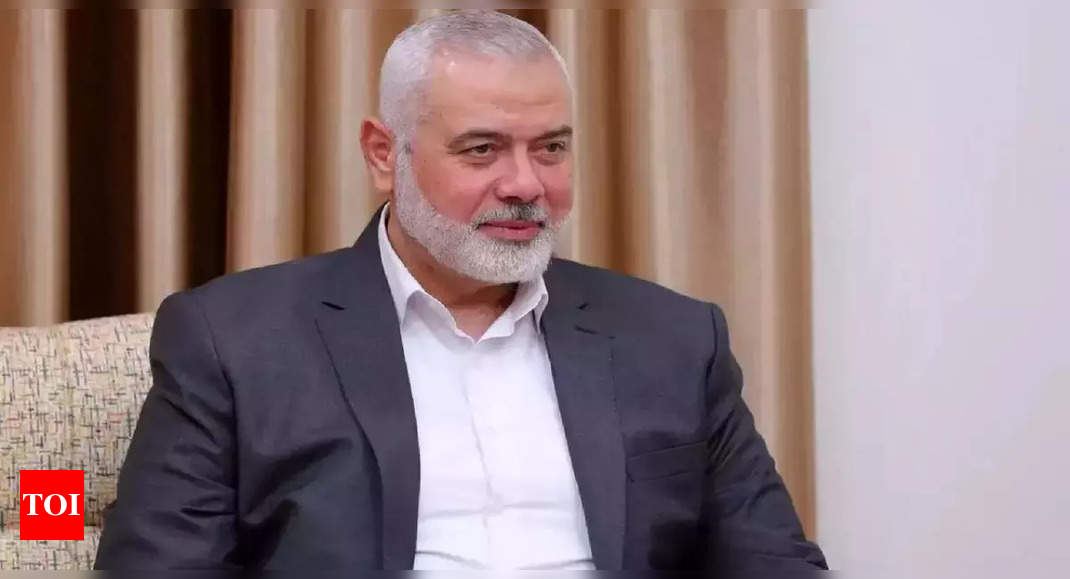
Over the years, Israel has been accused of conducting a covert war against Iran, engaging in a series of clandestine operations that have targeted the Islamic Republic’s nuclear infrastructure, key personnel, and strategic assets. These actions, which Israel rarely acknowledges, have included: Explosions in secretive underground nuclear facilities. Cyber attacks.Top scientists poisoned. Natural gas pipelines sabotaged.
The list of alleged Israeli attacks continues to grow, with the latest accusation pointing to Israel’s involvement in the assassination of Hamas leader Ismail Haniyeh in Tehran.
Driving the news
The list of alleged Israeli attacks continues to grow, with the latest accusation pointing to Israel’s involvement in the assassination of Hamas leader Ismail Haniyeh in Tehran.
Driving the news
- In a stunning operation, Israeli intelligence services managed to assassinate Haniyeh by detonating a pre-planted explosive device in his bedroom at an Iranian government official residence in Tehran.
- The explosion that claimed Haniyeh’s life occurred on Tuesday night, but the official announcement of his death was delayed until Wednesday morning. Initially, Hamas said that Haniyeh was killed in an Israeli airstrike, while Iranian media reported conflicting accounts of missiles being launched by a drone or from outside Iran.
- The New York Times first reported the details about the planted explosive device, which were later confirmed to Axios by two sources.
- According to the Middle Eastern officials, including the Iranians, the device exploded at around 2am local time. Alarmed building staff members rushed to locate the source of the loud noise, leading them to the room where Haniyeh and his bodyguard were staying.
- The compound is equipped with a medical team, which immediately responded to the explosion. They declared Haniyeh dead at the scene and attempted to revive the bodyguard, but he had also succumbed to his injuries, the NYT report said.
Why it matters
- The
Mossad ‘s ability to plant an explosive device in a high-security facility underscores the deep penetration of Israeli intelligence inside Iran and highlights vulnerabilities in the Iranian intelligence and security apparatus. - The attack could not have been carried out without the involvement of locals. This show there is a high degree of resentment agains the Iranian regime among the general public. Some Iranians are ready to risk their lives to align with Israel to wage a war against the current regime.
Behind the scenes
- According to the Middle Eastern officials, Haniyeh had frequently stayed at the guesthouse during his visits to Tehran, the NYT report said.
- The Israeli intelligence had identified the exact room Haniyeh would use during his visits to Tehran.
- The bomb, a high-tech device utilizing artificial intelligence, was planted in advance and detonated remotely by Mossad operatives on Iranian soil.
- The exact details about the make of the bomb is still not clear much.
- As per the NYT, the exact details of how the bomb was placed in the guesthouse remain unclear. Middle Eastern officials said that the assassination required months of planning and extensive surveillance of the compound. The two Iranian officials who described the nature of the assassination admitted that they were unaware of how or when the explosives were planted in the room.
- The IRGC has initiated an investigation into the incident. Israel did not inform the US or any other ally before the assassination but briefed US officials afterward.
The big picture
- Although Israel has not publicly claimed responsibility for the assassination, Israeli intelligence officials briefed the United States and other Western governments on the details of the operation immediately after it occurred, the NYT report said.
- Israeli Prime Minister
Benjamin Netanyahu , in charge of the Mossad, decided on the assassination, the Axios report said. - The decision factored in negotiations for releasing hostages held by Hamas and establishing a ceasefire.
- A source told Axios that Haniyeh’s death would avenge the October 7 attack victims and potentially facilitate a hostage deal by removing a hardline obstacle.
Zoom in
- The explosive device was covertly smuggled into the Tehran guesthouse months in advance. The guesthouse, part of a large compound known as Neshat, is run and protected by Iran’s
Revolutionary Guard . - The blast killed Haniyeh and a bodyguard, shook the building, shattered windows, and partially collapsed an exterior wall.
- This assassination exposes significant failings in Iran’s security measures and intelligence operations.
- Three Iranian officials described this breach as a disastrous failure of intelligence and security for Iran and a significant embarrassment for the Revolutionary Guard, which utilizes the compound for retreats, confidential meetings, and accommodating high-profile guests like Haniyeh, the NYT report said.
What’s next
- The assassination is expected to trigger further tensions in the region. Iran’s Supreme Leader Ayatollah Ali Khamenei has threatened harsh punishment for Haniyeh’s killing, potentially leading to retaliatory actions against Israel.
- This incident may also impact ongoing ceasefire negotiations and the broader geopolitical dynamics in the Middle East.
(With inputs from agencies)





